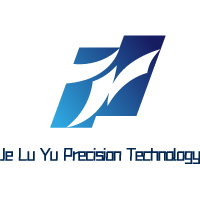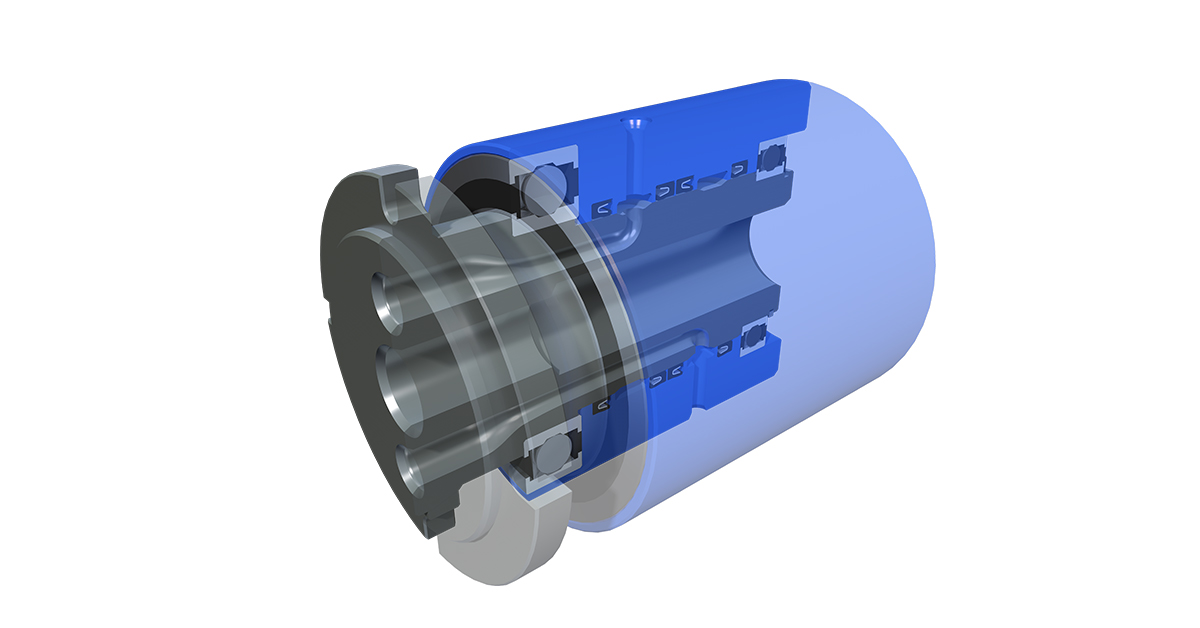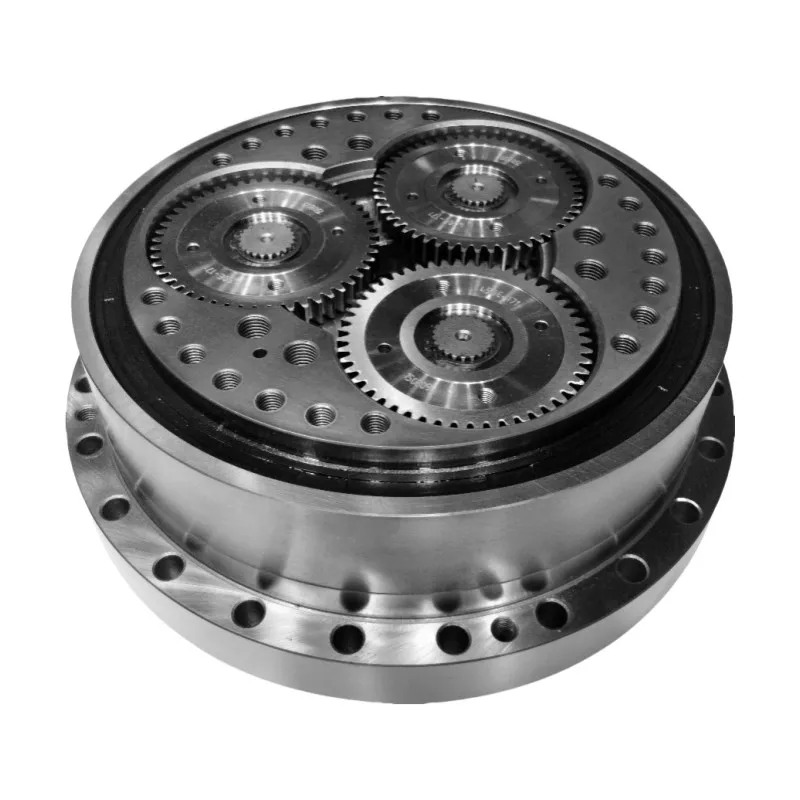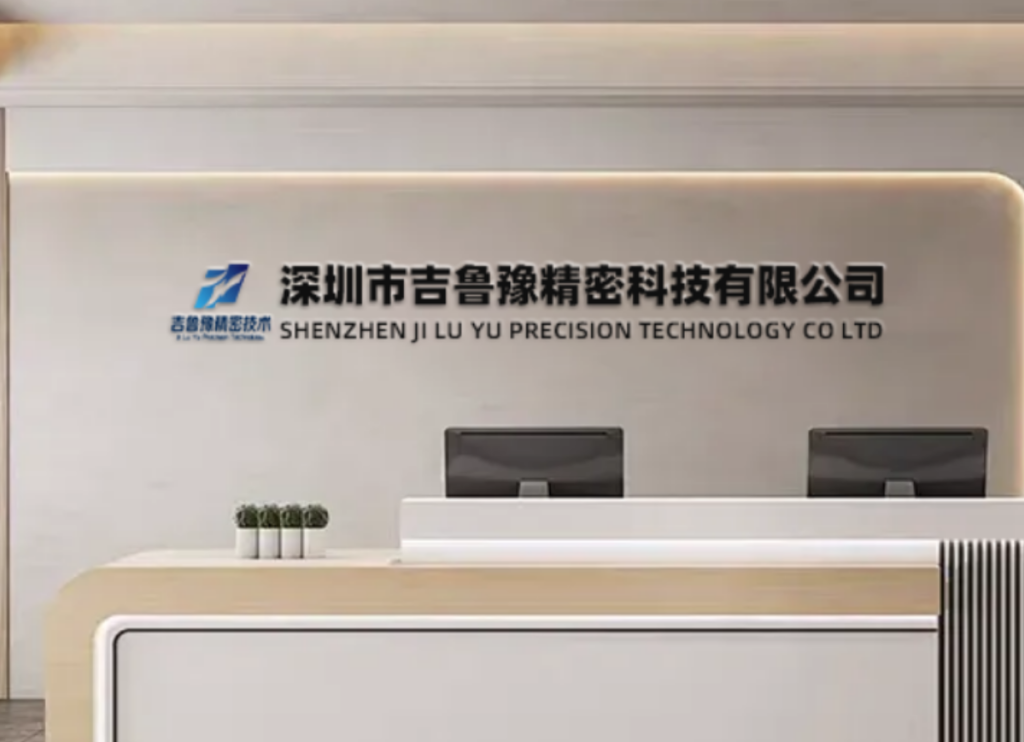9 Advanced Manufacturing Techniques for High-Performance Robotic Joint Actuator Systems
Introduction: The Engineering Heart of Modern Robotics
In the sophisticated world of industrial automation and advanced robotics, the robotic joint actuator serves as the fundamental building block that enables precise, dynamic motion control across countless applications. These complex electromechanical systems represent the convergence of precision engineering, advanced materials science, and sophisticated control algorithms to create the motion capabilities that define modern robotic systems. The manufacturing quality and integration precision of each robotic joint actuator directly determines the overall performance, reliability, and operational capabilities of the complete robotic system, making excellence in actuator production absolutely critical for success in today’s competitive automation markets.
As specialized precision machining experts at JLYPT, we have developed comprehensive manufacturing methodologies for producing high-performance robotic joint actuator systems. This detailed technical examination explores nine essential manufacturing techniques that transform engineering concepts into reliable motion components, while investigating the sophisticated engineering principles that ensure optimal performance in demanding operational environments across various industries and applications.
1. Fundamental Architecture of Robotic Joint Actuator Systems
1.1 Core Components and System Integration
Understanding the complex architecture of robotic joint actuator systems begins with recognizing their fundamental components and how they interact to create precise, controlled motion.
Primary Actuator Subsystems:
-
Power Transmission System: Gearing components, shafts, and coupling mechanisms
-
Motor Assembly: Electric motor providing rotational force and motion generation
-
Feedback System: Encoders, resolvers, and sensors for position and velocity monitoring
-
Structural Housing: Precision-machined enclosures for component protection and alignment
-
Control Electronics: Drive systems, amplifiers, and control circuitry
Performance Classification Table:
| Actuator Class | Torque Range (Nm) | Speed Range (RPM) | Positioning Accuracy | Typical Applications |
|---|---|---|---|---|
| Micro Actuator | 0.1-5 | 10-5,000 | ±0.05° | Small robotic joints, precision instruments |
| Standard Industrial | 5-200 | 5-3,000 | ±0.02° | Industrial robots, automation systems |
| High-Performance | 200-1,000 | 5-2,000 | ±0.01° | Aerospace, semiconductor manufacturing |
| High-Torque | 1,000-5,000 | 1-1,000 | ±0.03° | Heavy automation, material handling |
| Ultra-Precision | 1-50 | 10-4,000 | ±0.001° | Medical robots, optical systems |
1.2 Critical Performance Parameters
The operational excellence of robotic joint actuator systems is quantified through several key performance indicators that must be carefully engineered during manufacturing:
Motion Control Metrics:
-
Torque Density: 15-45 Nm/kg for standard industrial actuators, up to 65 Nm/kg for premium models
-
Velocity Regulation: 0.01-0.2% of base speed under load variations
-
Settling Time: 15-60 milliseconds for 95% position acquisition
-
Stiffness Characteristics: Torsional stiffness ranging from 500-10,000 Nm/rad
Durability and Reliability:
-
Bearing Life: L10 rating exceeding 25,000 hours at rated load
-
Thermal Management: Continuous operation at 40-80°C ambient temperatures
-
Vibration Resistance: 5-20G operational capability depending on application
-
IP Rating: IP54 standard, IP67 for harsh environments, IP69K for washdown applications
2. Advanced Material Selection Strategies
2.1 Comprehensive Material Engineering
The performance characteristics of robotic joint actuator components are fundamentally influenced by material selection, with each application demanding specific mechanical, thermal, and electromagnetic properties.
Material Selection Guide for Robotic Joint Actuator Components:
| Material Specification | Applications | Yield Strength (MPa) | Thermal Conductivity (W/m·K) | Weight Savings |
|---|---|---|---|---|
| Aluminum 6061-T6 | Housing, structural frames | 275 | 167 | 60% vs steel |
| Aluminum 7075-T6 | High-strength components | 503 | 130 | 55% vs steel |
| Stainless 17-4PH | Shafts, fasteners, corrosion parts | 1,100 | 18 | 15% vs steel |
| Alloy Steel 4140 | Gears, high-strength shafts | 655 | 42 | Baseline |
| Titanium 6Al-4V | Aerospace, weight-critical | 830 | 6.7 | 40% vs steel |
| Copper C10100 | Electrical components, thermal paths | 69 | 391 | 10% vs steel |
| Engineering Plastics | Bushings, wear components | 50-150 | 0.2-0.5 | 70-80% vs metals |
2.2 Specialized Material Processing
Advanced Heat Treatment Processes:
-
Case Hardening: Carburizing and nitriding for surface hardness up to 62 HRC
-
Precipitation Hardening: Aging treatments for stainless steels and aluminum alloys
-
Stress Relief Annealing: Thermal processing for dimensional stability
-
Cryogenic Treatment: Deep freezing for enhanced wear resistance and stability
Surface Engineering Technologies:
-
Hard Anodizing: Aluminum surface treatment achieving 60-70 Rockwell C hardness
-
Electroless Nickel Plating: Uniform corrosion protection with controlled thickness
-
PVD Coatings: Titanium nitride and diamond-like carbon for wear resistance
-
Thermal Spray Coatings: Tungsten carbide and ceramic coatings for extreme conditions
3. Precision CNC Machining Methodologies
3.1 Multi-Axis Machining Strategies
The manufacturing of high-performance robotic joint actuator components demands sophisticated machining approaches that combine micron-level accuracy with production efficiency.
5-Axis Simultaneous Machining Applications:
-
Complex Housing Geometries: Ability to machine intricate cooling channels and mounting features in single setups
-
Reduced Setup Time: Complete machining operations minimize cumulative error to under 0.008mm
-
Optimal Tool Engagement: Continuous tool path optimization maintains consistent cutting forces and tool life
-
Superior Surface Finish: Elimination of stair-stepping artifacts achieves Ra 0.4μm or better
Swiss-Type Turning Capabilities:
-
Micro-Machining Precision: Production of small precision components to ±0.002mm tolerances
-
Complex Part Features: Ability to machine multiple diameters, threads, and contours in single operation
-
Material Efficiency: Minimal material waste through optimized bar stock utilization
-
High Volume Production: Consistent quality in manufacturing large quantities with SPC control
3.2 Specialized Machining Processes
High-Speed Machining Parameters for Robotic Joint Actuator Components:
| Operation | Material | Cutting Speed (m/min) | Feed Rate (mm/tooth) | Depth of Cut (mm) | Surface Finish (Ra μm) |
|---|---|---|---|---|---|
| Roughing Aluminum | 6061-T6 | 800-1,200 | 0.15-0.30 | 2.0-5.0 | 1.6-3.2 |
| Finishing Aluminum | 6061-T6 | 1,000-1,500 | 0.08-0.15 | 0.5-1.5 | 0.4-0.8 |
| Steel Roughing | 4140 | 120-180 | 0.10-0.20 | 1.5-3.0 | 1.6-3.2 |
| Steel Finishing | 4140 | 150-220 | 0.05-0.12 | 0.3-1.0 | 0.6-1.2 |
| Hard Machining | Hardened Steel | 80-120 | 0.03-0.08 | 0.2-0.5 | 0.4-0.8 |
4. Gear System Manufacturing Excellence
4.1 Precision Gear Production
The heart of any robotic joint actuator system lies in its gear transmission components, which require exceptional manufacturing precision for optimal performance.
Gear Manufacturing Technologies:
-
CNC Gear Hobbing: Multi-axis simultaneous control for helical and spur gears
-
Gear Shaping: Internal gear production and complex tooth forms
-
Precision Grinding: Hardened gear finishing to AGMA 12-14 quality
-
Honing and Superfinishing: Final surface refinement for noise reduction and efficiency
Gear Quality Specifications:
-
Tooth Profile Accuracy: AGMA Class 10-12 for standard applications, Class 13-15 for precision
-
Surface Finish: Ra 0.2-0.8μm for optimal lubrication and wear characteristics
-
Pitch Deviation: ±0.005mm maximum for smooth operation and load distribution
-
Heat Treatment: Case depth control within ±0.1mm of specification
4.2 Bearing System Integration
Bearing Selection and Mounting:
-
Bearing Types: Angular contact, deep groove, and crossed roller configurations
-
Preload Optimization: Controlled preload for stiffness without excessive friction
-
Mounting Tolerances: H6/h6 fits for rotating components, H7/j6 for stationary
-
Sealing Systems: Multi-labyrinth and contact seals for contamination protection
5. Thermal Management Solutions
5.1 Advanced Cooling Technologies
Effective thermal management is crucial for maintaining performance and longevity in robotic joint actuator systems, particularly during continuous operation at high torque levels.
Cooling Method Comparison:
| Cooling Method | Heat Dissipation Capacity | Complexity | Cost Factor | Typical Applications |
|---|---|---|---|---|
| Natural Convection | 10-30 W total | Low | 1.0x | Small actuators, low duty cycle |
| Forced Air Cooling | 30-100 W total | Medium | 1.5-2.0x | General industrial applications |
| Liquid Cooling | 100-500 W total | High | 3.0-5.0x | High-performance applications |
| Conduction Cooling | 50-200 W total | Medium | 2.0-3.0x | Compact designs, harsh environments |
| Phase Change Cooling | 200-1,000 W total | Very High | 5.0-10.0x | Extreme performance applications |
5.2 Integrated Thermal Management Features
Advanced Cooling Solutions:
-
Spiral Cooling Channels: Optimized helical passages with calculated flow rates and pressure drop
-
Heat Pipe Integration: Passive cooling for localized hot spots in compact designs
-
Thermal Interface Materials: Advanced compounds with 3-8 W/m·K conductivity
-
Composite Materials: Thermally conductive polymers and metal composites for lightweight solutions
6. Precision Assembly and Integration
6.1 Assembly Process Control
The assembly of robotic joint actuator systems requires meticulous attention to detail and controlled processes to ensure optimal performance and reliability.
Critical Assembly Steps:
-
Component Cleaning: Ultrasonic cleaning and precision drying procedures
-
Bearing Installation: Controlled force application and temperature management
-
Gear Meshing: Backlash control within 2-5 arc-minutes for precision applications
-
Alignment Verification: Laser alignment and runout measurement during assembly
Assembly Quality Metrics:
-
Runout Tolerance: 0.010mm maximum for standard applications, 0.005mm for precision
-
Parallelism: 0.015mm per 100mm for mounting surfaces
-
Concentricity: 0.008mm maximum between bearing seats and critical features
-
Flatness: 0.012mm per 100mm for mounting interfaces
6.2 Integration with Robotic Systems
Mounting and Interface Considerations:
-
Flange Design: ISO 9409-1 standard or custom configurations
-
Shaft Connections: Keyways, splines, or clamping systems for torque transmission
-
Electrical Interfaces: Connector types, cable management, and EMI protection
-
Feedback Integration: Encoder and resolver mounting with precise alignment
7. Quality Assurance and Testing Protocols
7.1 Comprehensive Metrology Systems
The verification of robotic joint actuator components employs advanced measurement technologies and rigorous inspection protocols.
Dimensional Metrology:
-
Coordinate Measuring Machines: Volumetric accuracy to 1.8 + L/300 μm with temperature compensation
-
Laser Scanning: High-density point cloud capture for complex surface analysis
-
Roundness Measurement: Accuracy to 0.025μm with harmonic analysis capability
-
Surface Topography: 3D surface analysis with Ra measurement to 0.01μm resolution
Performance Testing:
-
Torque Verification: Static and dynamic torque measurement with 0.5% accuracy
-
Efficiency Mapping: Input-output power measurement across operating range
-
Thermal Performance: Temperature rise verification under continuous operation
-
Vibration Analysis: FFT analysis to identify resonant frequencies and structural issues
7.2 Environmental and Durability Testing
Reliability Validation:
-
Accelerated Life Testing: 10,000+ hours of continuous operation simulation
-
Thermal Cycling: -40°C to +120°C temperature range testing
-
Vibration Endurance: Random vibration to 10Grms per MIL-STD-810
-
IP Rating Verification: Ingress protection testing for specified environmental ratings
8. Application Case Studies
Case Study 1: High-Speed Packaging Robot
Challenge: A packaging automation company required high-performance robotic joint actuator for a new generation of delta robots operating at 600 cycles per minute with positional accuracy of ±0.05mm. The existing systems experienced thermal issues and bearing failures after 1,000 hours.
JLYPT Solution: We developed custom robotic joint actuator using aluminum 7075-T6 for structural components and integrated liquid cooling channels. The manufacturing process incorporated 5-axis simultaneous machining for complex housing geometries and precision grinding for shaft components. Special attention was paid to thermal management and bearing alignment.
Results:
-
Achieved continuous operation at 650 cycles per minute
-
Maintained positional accuracy within ±0.03mm
-
Extended service life to 18,000 hours between maintenance
-
Reduced energy consumption by 25% through improved efficiency
Case Study 2: Semiconductor Wafer Handling Robot
Challenge: A semiconductor equipment manufacturer needed ultra-clean robotic joint actuator for wafer handling robots with minimal particle generation and exceptional reliability in vacuum environments.
JLYPT Solution: Our engineering team designed specialized robotic joint actuator using stainless steel 17-4PH with mirror-like surface finishes (Ra 0.2μm). The manufacturing process emphasized debris-free assembly techniques and specialized lubrication systems compatible with vacuum environments. All components underwent rigorous cleaning and packaging procedures.
Results:
-
Achieved particle generation rates below Class 1 cleanroom requirements
-
Maintained performance through 30,000 hours of continuous operation
-
Enabled 40% faster wafer transfer cycles through higher acceleration
-
Reduced maintenance downtime by 90% through extended service intervals
Case Study 3: Heavy-Duty Industrial Manipulator
Challenge: An automotive manufacturer required robust robotic joint actuator for material handling robots with 1,000kg payload capacity and high shock load resistance. The existing systems experienced structural failures and bearing damage under heavy loads.
JLYPT Solution: We implemented heavy-duty robotic joint actuator using alloy steel 4140 with through-hardening to 42 HRC. The design incorporated increased shaft diameters and optimized bearing arrangements for higher impact resistance. Precision machining after heat treatment maintained geometric accuracy while achieving compressive residual stresses.
Results:
-
Achieved shock load capacity of 800% rated torque
-
Maintained performance through 20,000 hours of heavy-duty operation
-
Reduced maintenance requirements by 80%
-
Improved positioning repeatability for consistent operation
9. Future Trends and Innovations
9.1 Emerging Technologies
The evolution of robotic joint actuator technology continues with several promising directions:
Advanced Materials:
-
Carbon Nanotube Composites: Revolutionary strength-to-weight ratios with 5x current capacity
-
High-Temperature Superconductors: Dramatically increased power density with near-zero losses
-
Shape Memory Alloys: Adaptive performance characteristics based on operational conditions
-
Metamaterials: Customized thermal and electromagnetic properties for optimized performance
Digital Integration:
-
Embedded Fiber Optic Sensors: Real-time temperature, vibration, and load monitoring
-
IoT Connectivity: Remote monitoring and predictive maintenance capabilities with cloud analytics
-
Digital Twins: Virtual modeling and performance optimization with real-time synchronization
-
AI-Driven Control: Adaptive performance based on operational conditions and wear patterns
9.2 Manufacturing Technology Advances
The future of robotic joint actuator manufacturing includes:
Additive Manufacturing:
-
Complex Cooling Channels: Optimized thermal management geometries impossible with traditional machining
-
Integrated Structures: Combined multiple components into single pieces reducing assembly time
-
Customized Designs: Application-specific optimization through generative design algorithms
-
Lightweight Structures: Topology-optimized weight reduction with maintained stiffness
Sustainable Manufacturing:
-
Energy-Efficient Processes: Reduced environmental impact through optimized machining parameters
-
Recyclable Materials: Closed-loop material usage with 95% recycling rates
-
Green Manufacturing: Environmentally conscious production methods with carbon neutrality goals
-
Lifecycle Optimization: Design for extended service life and complete recyclability
Conclusion: Engineering Excellence in Robotic Motion Systems
Robotic joint actuator technology represents the pinnacle of precision engineering in modern automation systems. The nine manufacturing techniques explored—advanced material selection, precision CNC machining, thermal management, bearing integration, quality assurance, electrical optimization, application-specific engineering, performance validation, and future innovation—demonstrate the comprehensive approach required to produce components that meet the exacting demands of contemporary robotic applications.
As robotic technology continues to advance, the requirements for robotic joint actuator systems will become increasingly demanding, driving further innovation in manufacturing technologies and material science. The integration of digital technologies, advanced analytics, and sustainable manufacturing practices will ensure that joint actuator technology remains at the forefront of industrial innovation.
At JLYPT, our commitment to manufacturing excellence ensures that every robotic joint actuator component we produce meets the highest standards of performance, reliability, and efficiency. Through continuous improvement and rigorous quality assurance, we enable our partners to achieve new levels of capability and performance in their automated systems.
For engineering teams seeking to enhance their robotic systems through superior joint actuator solutions, contact JLYPT today to discuss your specific requirements and discover how our manufacturing expertise can contribute to your success in the competitive field of industrial automation.








